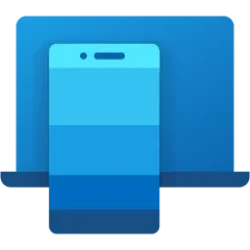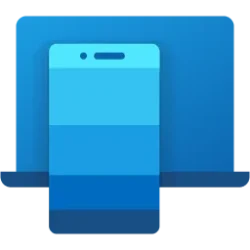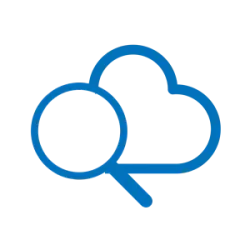Navigation
Install the app
How to install the app on iOS
Follow along with the video below to see how to install our site as a web app on your home screen.
Note: This feature may not be available in some browsers.
More options
Style variation
-
Disable Automatic Windows Updates in Windows 11
This tutorial will show you how to disable Windows Update from automatically downloading and installing updates in Windows 10 and Windows 11.- Brink
- Replies: 13
-
Use ViVeTool to Enable or Disable Hidden Features in Windows 11
This tutorial will show you how to use ViVeTool to enable or disable hidden features in Windows 10 and Windows 11.- Brink
- Replies: 49
-
Restore Classic File Explorer with Ribbon in Windows 11
This tutorial will show you how to restore the classic File Explorer with Ribbon for your account or all users in Windows 11.- Brink
- Replies: 407
-
Create Windows 11 Bootable USB Installation Media
This tutorial will show you how to create a bootable USB flash drive used to install Windows 11 with UEFI support.- Brink
- Replies: 128
-
Uninstall or Reinstall Copilot app
This tutorial will show you different ways to uninstall or reinstall the Copilot app for your account or all users in Windows 10 and Windows 11.- Brink
- Replies: 0
-
Add or Remove "Learn about this picture" Desktop icon
This tutorial will show you how to add or remove the "Learn about this picture" desktop icon when using Windows Spotlight as your desktop background for your account in Windows 11 and Windows 10.- Brink
- Replies: 27
-
Use SFC to Repair System Files in Windows 11
This tutorial will show you how to run the System File Checker (SFC) tool to repair missing, corrupted, and modified system files in Windows 10 and Windows 11.- Brink
- Replies: 25
-
Download Official Windows 11 ISO file from Microsoft
This tutorial will show you how to download an official Windows Server ISO or Windows 11 64-bit or ARM64 ISO file from Microsoft.- Brink
- Replies: 418
-
Repair Install Windows 11 with an In-place Upgrade
This tutorial will show you how to do a repair install of Windows 11 by performing an in-place upgrade without losing anything.- Brink
- Replies: 339
-
Clean Install Windows 11
This tutorial will show you step by step on how to clean install Windows 11 at boot on your PC with or without an Internet connection and setup with a local account or Microsoft account.- Brink
- Replies: 243
Tutorials
Windows 11 tutorials, tricks, tips, and guides.
This tutorial will show you how to turn on or off tablet-optimized taskbar for your account in Windows 11.
Starting with Windows 11 build 22621.1344, Microsoft introduced a touch-optimized taskbar for 2-in-1 devices that you can use as a tablet. There are two states of this taskbar: collapsed and expanded. To switch between the two states, swipe up and down on the bottom of your screen. When collapsed in tablet mode, the taskbar recedes to give you more screen space and keeps you from accidentally opening the taskbar. When expanded in tablet mode, the taskbar is optimized to be easier to use with touch. Your taskbar will automatically change to this optimized version when you disconnect or fold back the keyboard.
This feature only...
This tutorial will show how to add or remove the "Copy as path" context menu and "Copy path" from the File Explorer command bar menu for all users in Windows 10 and Windows 11.
Copy path or Copy as path will copy the full path of selected items (files and folders) wrapped in quotes to the Clipboard so you can paste (Ctrl+V) the full path(s) of the item(s) where you like.
You must be signed in as an administrator to add or remove the "Copy as path" and "Copy path" context menu.
EXAMPLE: "Copy as path" and "Copy path" context menu
Here's How:
1 Do step 2 (add) or step 3 (remove) below for what you would like to do.
Add "Copy as path" and "Copy path" context menu for All Users
This is the default setting.
A) Click/tap on the...
This tutorial will show you how to change the name of folders of apps on the Start menu for your account in Windows 11.
The Start menu is comprised of three sections: Pinned, All apps, and Recommended.
The Start menu contains shortcuts of all your apps, settings, and files.
Starting with Windows 11 build 22557, you can now customize your pinned apps on the Start menu by organizing them into folders. You can add more apps to a folder, rearrange apps within a folder, and remove apps from a folder.
Starting with Windows 11 build 22579, you can now name your folders of apps in Start.
Here's How:
1 Open the Start menu :win:.
2 Click/tap on a folder of apps on Start you want to rename. (see screenshot below)
3 Click/tap in the...
This tutorial will show you how to reset the notification icons cache to fix any corrupted icons and remove any old icons from the taskbar system tray for your account in Windows 11.
The system tray on the taskbar corner and taskbar corner overflow menu in Windows 11 shows the notification icons for apps.
Sometimes the notification icons cache may get corrupted causing the icons to display incorrectly or distorted, and still show icons of uninstalled apps in the Other system tray icons (new name) or Taskbar corner overflow (old name) settings. When this happens, the notification icons needs to be deleted in the registry to reset and automatically recreate them.
EXAMPLE: Notifications icons on taskbar system tray
EXAMPLE: Taskbar...
This tutorial will show you how to change the icon of a drive to any icon for your account or all users in Windows 10 and Windows 11.
A drive icon is a graphical representation of a drive in File Explorer > This PC.
Windows will use a default icon for a drive based on what type of drive it is, such as a network drive, mapped drive, USB drive, internal drive, external drive, DVD drive, Windows drive, etc...
If you like, you can use your own custom icon for a drive instead of the default icon assigned to the drive by Windows.
Option One: Change Icon of Drive for Current User in Registry Editor
Option Two: Change Icon of Drive for All Users in Registry Editor
Option Three: Change Icon of Drive using autorun.inf File
EXAMPLE...
This tutorial will show you how to change the icon of a LNK or URL shortcut for your account in Windows 10 and Windows 11.
A shortcut is a link to an item (such as a file, folder, or app) on your PC. You can create shortcuts and then place them in a convenient location, such as on the desktop, so you can easily access the item that the shortcut links to. Shortcut files (.lnk) can be distinguished from the source target by the arrow that appears overlayed on the shortcut's icon.
When a new shortcut is created, it will use the same icon used by the source app, file, folder, drive, or web site (URL - browser) it points to by default. You can change the icon of a shortcut to be any icon you want without changing the icon of the source...
This tutorial will show you how to add or remove the "NVIDIA Control Panel" desktop context menu for your account in Windows 10 and Windows 11.
If your Windows device has NIVIDIA graphics and NVIDIA display drivers installed, the NVIDIA Control Panel is included in the GeForce driver.
Featuring display management, application, and gaming-specific features, the NVIDIA Control Panel ensures the best overall experience using NVIDIA graphics.
The NVIDIA Control Panel is added to the desktop context menu by default.
If wanted, you can remove NVIDIA Control Panel from the desktop context menu.
Option One: Add or Remove NVIDIA Control Panel Desktop Context Menu in NVIDIA Control Panel
Option Two: Add or Remove NVIDIA Control Panel...
This tutorial will show you how to add Safe Mode to the boot options menu in Windows 11.
Safe mode starts Windows in a basic state, using a limited set of files and drivers. If a problem doesn't happen in safe mode, this means that default settings and basic device drivers aren't causing the issue. Observing Windows in safe mode enables you to narrow down the source of a problem, and can help you troubleshoot problems on your PC.
There are three different versions of safe mode:
Safe Mode: Starts Windows with a minimal set of drivers and services without an Internet connection.
Safe Mode with Networking: Starts Windows in safe mode and includes the network drivers and services needed to access the Internet or other computers on your...
This tutorial will show you how to add "Restart Widgets" to the desktop context menu for all users in Windows 11.
Widgets are small cards that display dynamic content from your favorite apps and services on your Windows desktop. They appear on the widgets board, where you can discover, pin, unpin, arrange, resize, and customize widgets to reflect your interests. Your widgets board is optimized to show relevant widgets and personalized content based on your usage.
If Widgets will not open, frozen, or acting buggy, then you could see if restarting the Widgets process may help.
If you like, you can add Restart Widgets to the desktop context menu to make it easy to restart Widgets on demand as needed.
While you must be signed in as an...
This tutorial will show you how to add "Restart Start menu" to the desktop context menu for all users in Windows 10 and Windows 11.
Microsoft separated the Start menu into its own process, called StartMenuExperienceHost.exe. This has a number of benefits, including simplifying debugging and insulating Start from potential issues impacting other surfaces.
This will allow you restart the Start menu as needed without having to restart the explorer.exe process.
Restarting the StartMenuExperienceHost.exe process can be helpful if the Start menu will not open, frozen, or acting buggy.
If you like, you can add Restart Start menu to the desktop context menu to make it easy to restart the Start menu on demand as needed.
While you must be...
This tutorial will show you how to add or remove VBScript Script File (VBS) to the New context menu for all users in Windows 10 and Windows 11.
A .vbs file is a VBScript (Visual Basic Script) file written in the VBScript scripting language that can be executed within Windows or Internet Explorer via the Windows-based script host (Wscript.exe), and may also use the .vb file extension.
The New context menu allows users to quickly create a new item in the current location.
The default New context menu items include to create a new Folder, Shortcut, Bitmap image, Text Document, Compressed (zipped) Folder, and Library.
If you like, you can add VBScript Script File to the New context menu to make it easier for users to create a new VBS...
Latest Tutorials
-
Phone Pin and Unpin Mobile Notifications in Phone Link app on Windows 11
- Started by Brink
- Replies: 0
-
Phone Clear Mobile Notifications in Phone Link app on Windows 11
- Started by Brink
- Replies: 0
-
Phone Add or Remove Android Apps as Favorites in Phone Link app on Windows 11
- Started by Brink
- Replies: 0
-
Accessibility Turn On or Off Move Windows to Top when Activating for Mouse Hover in Windows 11
- Started by Brink
- Replies: 0
-
-
Accessibility Turn On or Off Profanity Filter for Voice Typing in Windows 11
- Started by Brink
- Replies: 1
-
Apps Use Copilot Vision in Microsoft Edge and Copilot app on Windows 11
- Started by Brink
- Replies: 0
-
Privacy and Security Check Search Indexing Status in Windows 11
- Started by Brink
- Replies: 0
-
Privacy and Security Enable or Disable Search Cloud Content from Apps in Windows 11
- Started by Brink
- Replies: 0
-
Accessibility Add Word to Dictionary in Voice Access in Windows 11
- Started by Brink
- Replies: 0
Tutorial Tags
android
background
battery
bitlocker
bluetooth
boot
color
context menu
copilot
defender
desktop
display
drive
edge
file explorer
folder
fonts
hyper-v
icon
keyboard
libraries
location
mouse
notifications
onedrive
outlook
pen
pointer
power
printer
recall
screenshot
search
settings
share
shortcuts
sign-in
sound
start menu
store
taskbar
terminal
theme
touch
usb
voice
wi-fi
widgets
wsa
xbox




















